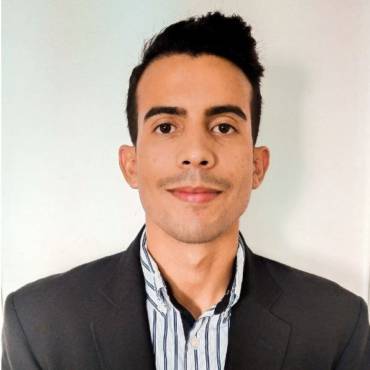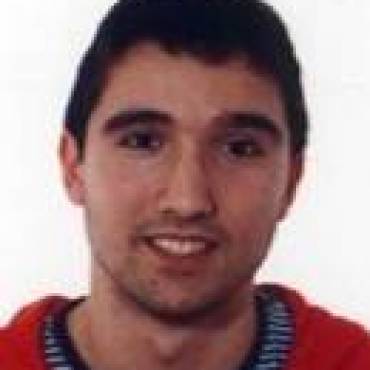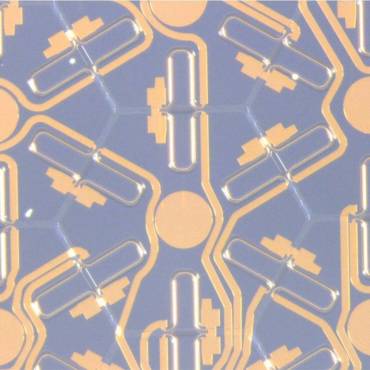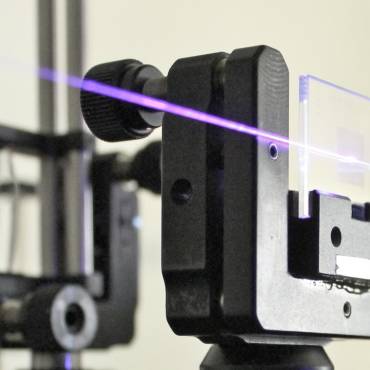 Our work on Space-Division Multiplexed Photonics is mainly supported by the 2016 Consolidator Grant InnoSpace awarded by the European Research Council, as well as two Spanish Projects. This research line strongly collaborates with the “Advanced Microwave Photonics” and “Optical Fibre Sensors & More Fun” research lines of the Photonics Research Labs.
Our work on Space-Division Multiplexed Photonics is mainly supported by the 2016 Consolidator Grant InnoSpace awarded by the European Research Council, as well as two Spanish Projects. This research line strongly collaborates with the “Advanced Microwave Photonics” and “Optical Fibre Sensors & More Fun” research lines of the Photonics Research Labs.
Next-generation global telecommunication paradigms will require entirely new technologies to address the current limitations to massive capacity and connectivity. A full integration between optical fibre and wireless networks will be the key for the upcoming multigigabit-per-second 5G wireless communications and the era of Internet of Things. There is one revolutionary approach that has however been left untapped in finding innovative ways to increase the end user capacity and provide adaptive radiofrequency-photonic interfaces: exploiting space – the last available degree of freedom for optical multiplexing.
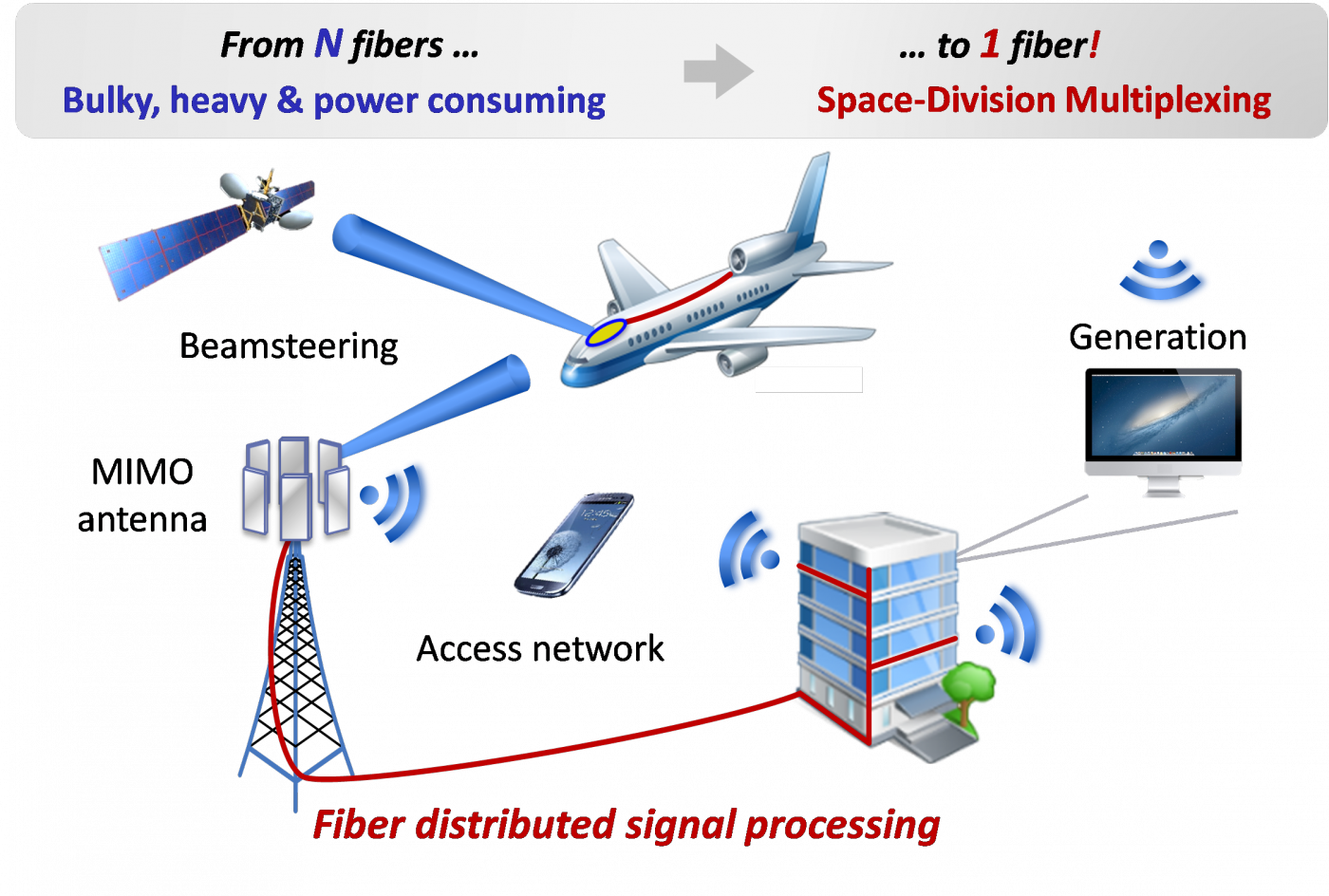
Space-Division multiplexing (SDM) has been recently touted as a solution for the capacity bottleneck in digital communications by establishing independent light paths in a single fiber. The idea underlying this research line is to develop a novel area of application for SDM in the context of fiber-wireless communications networks, not only for parallel distribution and multiple antenna connectivity, but also for radiofrequency signal processing.
1. Parallel distribution and multiple antenna connectivity
Centralized or Cloud Radio Access Networks (C-RAN) is an emergent architecture network that was proposed for 5G converged fiber-wireless access networks. One of the most relevant challenges that up-to-date C-RAN approaches for 5G communications have to face relates to the optical fiber availability, deployment and connectivity. In principle, at least 2M fibers are required to feed an M-sector cell only for single-antenna operation. If we target Multiple Input Multiple output (MIMO) antenna configurations, this figure will increase considerably. Therefore, we must consider some kind of optical multiplexing technique, beyond mere Wavelength Division Multiplexing (WDM), to cope with the constraint of not increasing the optical fiber count. The way to cope with this challenge is find in the extension of the concept of Space-Division Multiplexing in homogeneous multicore optical fibers to fiber-wireless communications. The SDM-based C-RAN architecture can be flexible enough to support both Digital and Analogue radio-over-fiber approaches, capacity upgrade by carrier aggregation and MIMO, CoMP operation, the distribution of control signals or a remote optical CW source, as well as Passive Optical Network integration.
2. Fiber distributed signal processing
SDM transmission media can act as distributed signal processing elements by exploiting their inherent parallelism to implement a broadband tuneable true time delay line for radiofrequency signals, [1]. The true time delay is actually the basis of multiple Microwave Photonics functionalities, such as controlled signal distribution, microwave signal filtering, antenna beam-steering, optoelectronic oscillation and arbitrary waveform generation. This approach relies on the concept of “fiber-distributed signal processing”, where the SDM fiber provides not only radio access distribution but also broadband microwave photonics signal processing. In particular, we are currently investigating three different SDM technologies:
- Homogeneous multicore fibers with inscribed dispersive elements. Together with researchers from the “Optical Fibre Sensors & More Fun” research line, led by Prof. Salvador Sales, we have experimentally demonstrated – for the first time to our knowledge – the use of Spatial Division Multiplexing for Microwave Photonics signal processing. This entailed the development of the first fabrication method to inscribe high-quality gratings characterized by arbitrary frequency spectra and located in arbitrary longitudinal positions along the individual cores of a multicore fiber. This work was published in Scientific Reports, [2].
- Heterogeneous multicore fibers. We work on the design of trench-assisted heterogeneous multicore fibers that are composed of cores featuring individual spectral group delays and chromatic dispersion profiles. Besides fulfilling the requirements for true time delay line operation, the MCFs are optimized in terms of higher-order dispersion, crosstalk and bend sensitivity, [3,4].
- Few-mode fibres. The objective here is to tailor the dispersion behaviour of individual modes to achieve a constant differential group delay, while providing control over the losses and the intermodal crosstalk.

The future display of fiber-wireless 5G and mm-wave communications will benefit from the compactness and spatial parallelism of the developed SDM technologies leaving behind bulky, heavy, power-consuming and expensive replication architectures.
meet the team
Spatial Division Multiplexing
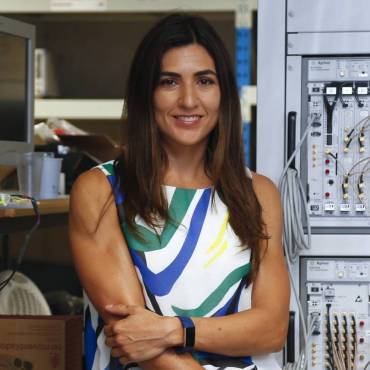
Ivana Gasulla
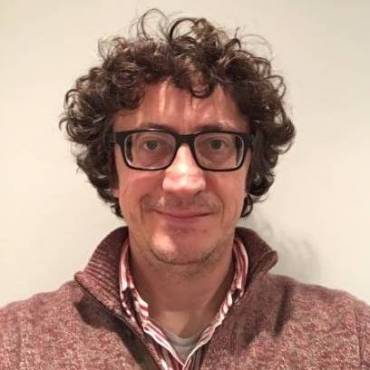
Salvador Sales
Publications
- R. Guillem, S. García, J. Madrigal, D. Barrera, and I. Gasulla, “Few-mode fiber true time delay lines for distributed radiofrequency signal processing,” Optics Express, vol. 26 (20), pp. 25761-25768, (2018).
- S. García, M. Ureña, R. Guillem and I. Gasulla, “Multicore fiber delay line performance against bending and twisting effects,” 44th European Conference on Optical Communication (ECOC 2018), Rome, Italy, 2018.
- S. García and I. Gasulla, “RF photonic delay lines using space-division multiplexing,” Steep Dispersion Engineering and Opto-Atomic Precision Metrology XI 10548, SPIE Photonics West 2018, San Francisco, US, 105480J, 2018, Invited.
- S. García, D. Barrera, J. Hervás, S. Sales, I. Gasulla, “Microwave Signal Processing over Multicore Fiber,” Photonics vol. 4 (4), (2017), Invited.
- S. García and I. Gasulla, “Experimental demonstration of multi-cavity optoelectronic oscillation over a multicore fiber,” Optics Express, vol. 25 (20), pp. 23663-23668, (2017).
- S. García, J. Hervás and I. Gasulla, “Demonstration of multi-cavity optoelectronic oscillators based on multicore fibers,” in Proc. 2017 IEEE International Topical Meeting on Microwave Photonics MWP 2017), Beijing, China, 2017, pp. 1-4.
- S. García and I. Gasulla, “Exploiting the space dimension for reconfigurable optical fiber delay lines,” Workshop on microwave photonic applications of specialty fibers, in 2017 IEEE International Topical Meeting on Microwave Photonics MWP 2017), Beijing, China, 2017, pp. 1-4, Invited.
- I. Gasulla, D. Barrera, J. Hervás and S. Sales, “Spatial Division Multiplexed Microwave Signal processing by selective grating inscription in homogeneous multicore fibers”, Nature Scientific Reports, vol. 7 (41727), pp. 1-10, (2017).
- I. Gasulla, S. García, D. Barrera, J. Hervás, and S. Sales, “Space-division multiplexing for fiber-wireless communications,” 20th International Conference on Transparent Optical Networks ICTON, Girona (Spain), 2017, Invited.
- I. Gasulla, S. García, D. Barrera, J. Hervás and S. Sales, “Fiber-distributed Signal Processing: Where the Space Dimension Comes into Play,” OSA Advanced Photonics Congress, New Orleans, US, 2017, Invited.
- S. García and I. Gasulla, “Dispersion-engineered multicore fibers for distributed radiofrequency signal processing,” Optics Express, vol. 24, no. 18, pp. 20641-20654, (2016).
- J. M. Galvé, I. Gasulla, S. Sales and J. Capmany, “Reconfigurable Radio Access Networks using Multicore Fibers”, IEEE J. of Quantum Electronics, vol. 52, no. 1, pp. 1-7, (2016), Invited.
- I. Gasulla, D. Barrera, J. Hervás, S. García, S. Sales, “Multi-cavity Microwave Photonics devices built upon multicore fibers”, 18th International Conference on Transparent Optical Networks ICTON, Trento, Italy, 2016, Invited.
- S. García, I. Gasulla, “Dispersion-Engineered Heterogeneous Multicore Fibers for True Time Delay operation,” in Proc. 2016 IEEE International Topical Meeting on Microwave Photonics, TuMP21, Long Beach, US, 2016,
- S. S. García, I. Gasulla, “Dispersion-optimized multicore fiber true time delay for microwave signal processing,” 2016 IEEE Photonics Conference, pp. 489-490, Hawaii, US, 2016.
- Garcia, I. Gasulla, “Distributed radiofrequency signal processing using multicore fibers,” in Proc. of SPIE 10026, Real-time Photonic Measurements, Data Management, and Processing II, 1002603, Beijing, China, 2016, Invited.
- I. Gasulla, S. Garcia, “Multicore fibers for distributed signal processing,” The 2nd International Conference on Microwave Photonics Technology and Application (MPTA 2016), Shanghai, China, 2016, Invited.
- S. García and I. Gasulla, “Design of Heterogeneous Multicore fibers as sampled True Time Delay Lines”, OSA Optics Letters, vol. 40, no. 4, pp. 621-624, (2015).
- S. García and I. Gasulla, “Multi-cavity Optoelectronic Oscillators using Multicore Fibers”, OSA Optics Express, vol. 23, no. 3, pp. 2403-2415, (2015).
- I. Gasulla and J. M. Kahn, “Performance of Direct-Detection Mode-Group-Division Multiplexing using Fused Fiber Couplers”, IEEE/OSA Journal of Lightwave Technology, vol. 33, no. 9, pp. 1748-1760, (2015).
- S. Garcia and I. Gasulla, “Crosstalk-optimized multicore fiber true time delay lines” in Proc. 2015 IEEE International Topical Meeting on Microwave Photonics, pp. 1-4, Paphos, Cyprus, (2015).
- I. Gasulla and S. Garcia, “Application of Multicore fibers to Microwave Photonics”, 36th Progress in Electromagnetics Research Symposium, Prague, Czech Republic, (2015), Invited.
- I. Gasulla and J. Capmany, “Microwave Photonics Applications of Multicore Fibers”, IEEE Photonics Journal, vol. 4, no. 3, pp. 877-888, (2012).



